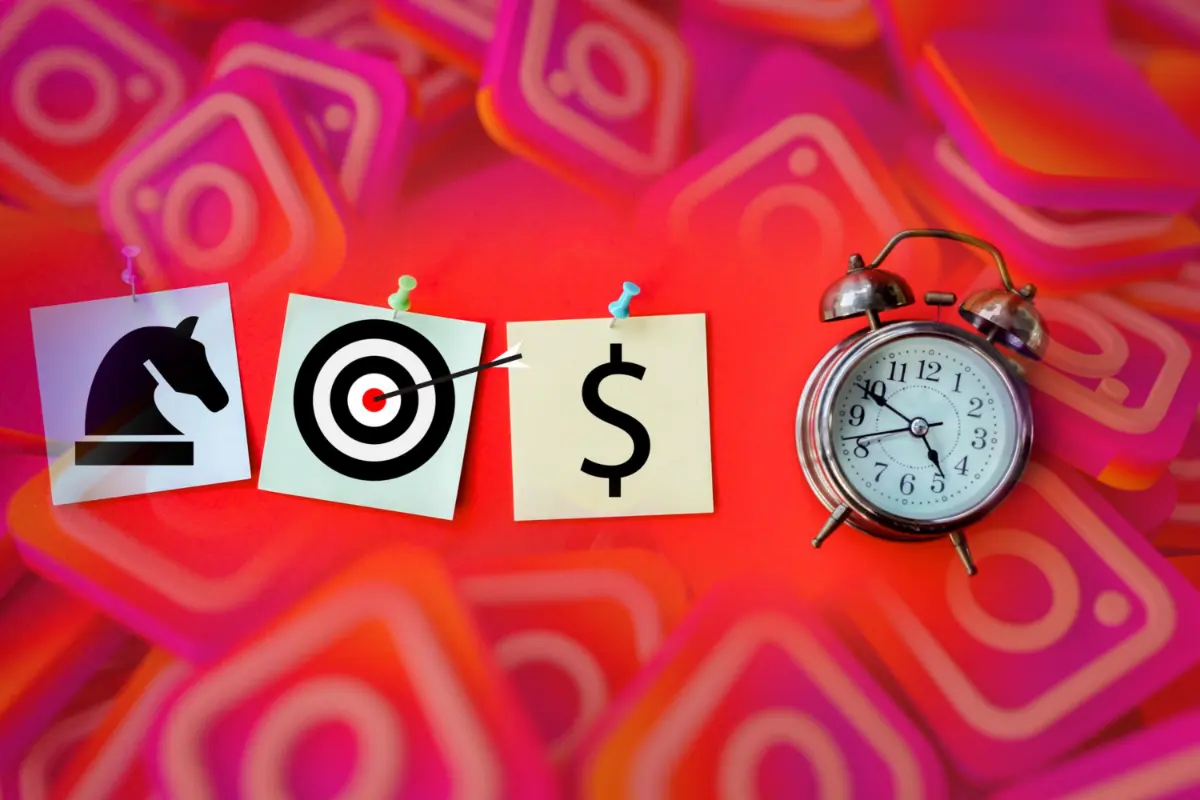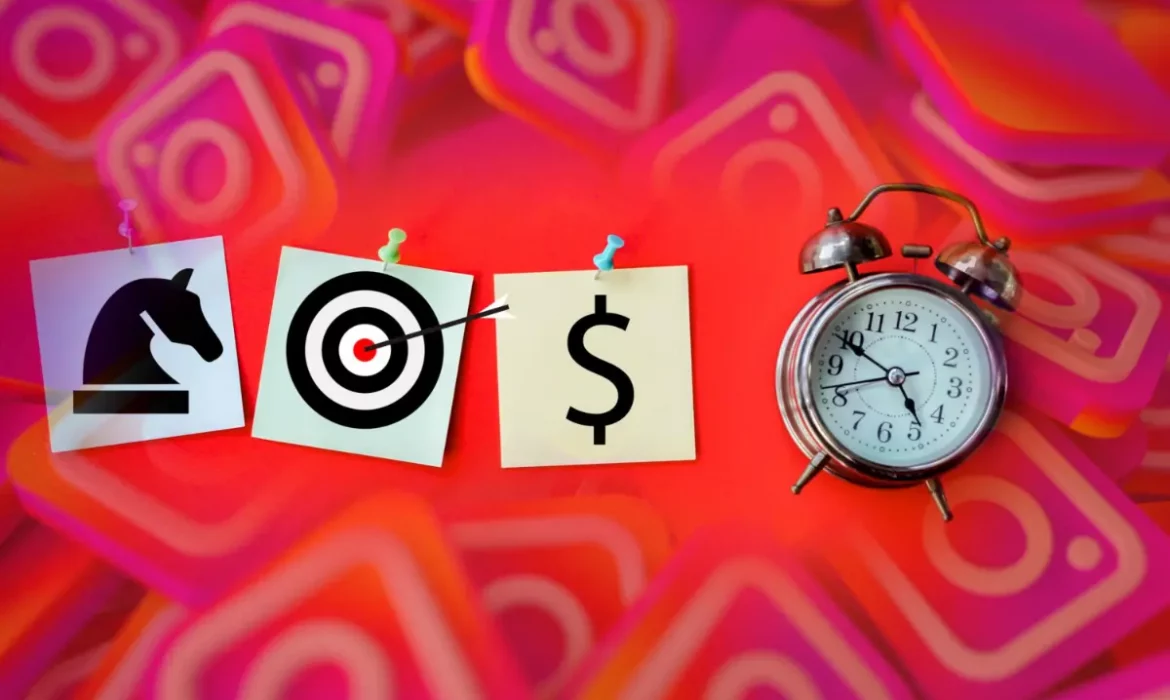
Thinking about using Instagram to boost your business? It’s a smart move. Instagram isn’t just a platform for sharing photos; it’s a powerful tool for reaching new audiences and driving sales. With over 158 million users in the U.S. alone, the potential is enormous. However, the key to success lies in mastering the cost of Instagram ads and effectively planning your advertising strategy.
Wondering how much to spend on Instagram ads? This guide demystifies Instagram advertising costs, breaking down what drives them and providing actionable tips on how to maximize the value of your Instagram ads budget.
Whether you’re new to Instagram ads or looking to refine your approach, we’ll help you navigate Instagram ads cost and develop a strategy that aligns with your business goals. Let’s dive in and unlock the full potential of your Instagram advertising strategy!
Let’s Recall The Basics Of Instagram Ads
Jumping into Instagram ads opens up a world of possibilities for your brand. From visually striking photo ads that integrate seamlessly into the feed to engaging video ads that tell a deeper story, the platform provides a variety of formats to reach your audience.
Here’s a quick rundown of the types of ads on Instagram in 2025
1. Photo Ads
Classic and straightforward, these ads appear in users’ feeds, looking just like regular posts but with a sponsored tag.
2. Video Ads
Similar to photo ads but with the power of motion, video ads can be up to 60 seconds long, offering a dynamic way to capture attention.
3. Carousel Ads
These allow users to swipe through a series of images or videos, perfect for showcasing multiple products or telling a brand story.
4. Stories Ads
Full-screen ads that appear between users’ Stories. With the ability to add interactive elements, they’re great for driving direct engagement.
5. IGTV Ads
Longer-form video content that’s ideal for deeper storytelling, appearing when users watch IGTV from a creator’s channel.
6. Reels Ads
Short, entertaining videos in a full-screen, immersive format that appear in between individual Reels, aligning with the trend of quick, engaging content.
7. Shopping Ads
These ads directly integrate with your Instagram shop, allowing users to purchase products seamlessly.
Instagram Advertising Rates: Minimum Spend and Tax Considerations
When diving into Instagram advertising, it’s helpful to start with the basics: understanding the minimum spend required and additional costs, like taxes, that you should anticipate.
This foundational knowledge can help you budget effectively and plan your campaigns with a clearer perspective on Instagram ads cost.
Minimum Spend for Instagram Ads
Instagram allows for a flexible advertising budget, but it’s essential to know that the platform has a minimum spending requirement. This minimum can be as low as $1 per day for impressions-based campaigns (CPM).
However, if you’re focusing on actions like clicks, likes, or video views, aiming for a slightly higher daily budget will ensure your campaign reaches a broader audience and achieves meaningful results. Knowing how much to spend on Instagram ads is crucial for maximizing your investment and optimizing your Instagram advertising budget.
Expecting Tax on Advertising Spend
Given the unified ad platform Meta offers for both Facebook and Instagram, understanding the tax implications across major markets is essential for advertisers using these channels.
Below is an indicative table that outlines expected tax rates on Meta advertising spend, which encompasses both Facebook and Instagram, in various countries:
| Country | Expected Tax on Ad Spend | Notes |
|---|---|---|
| United States | 0% – 10% (varies by state) | No federal tax, but state-level sales tax may apply. |
| Canada | 5% – 15% GST/HST | Depending on the province, both Goods and Services Tax and Harmonized Sales Tax might apply. |
| United Kingdom | 20% VAT | Value-Added Tax is standard across the country for all digital advertising. |
| Australia | 10% GST | Goods and Services Tax is applicable to digital ad spends. |
| India | 18% GST | A standard Goods and Services Tax rate for digital services. |
| Germany | 19% VAT | Digital advertising services are subject to Value-Added Tax. |
| Japan | 10% Consumption Tax | Consumption Tax applies uniformly to digital advertising services. |
Note:This table provides a general guideline. Tax rates are subject to change and can vary based on specific circumstances and regulations. Always confer with a financial advisor or tax professional in your country for accurate and up-to-date advice on tax implications for your ad spend on Meta platforms.
Average Costs of Advertising on Instagram
The costs can differ widely based on several factors, including your industry, target audience, and the competitiveness of your ad space. Here’s a general overview:
- Cost Per Click (CPC): On average, CPC rates on Instagram can range from $0.50 to over $1.00. However, industries with higher competition may see higher rates.
- Cost Per Mille (CPM): CPM, or cost per thousand impressions, typically ranges between $5.00 and $10.00 on Instagram. This rate indicates the cost of having your ad seen by a thousand viewers.
- Cost Per Action (CPA): For actions such as app installs or purchases, CPA can vary significantly based on the value of the action to the advertiser and the ad’s effectiveness. Rates can range from $0.50 to $5.00 or more.
12 Key Factors That Influence Ad Spend on Instagram
Now that you’re familiar with the types of ads at your disposal, let’s look at what influences how much you’ll spend on them:
1. Ad Objective
Your campaign’s goal (brand awareness, website traffic, conversions, etc.) influences cost. Objectives that drive direct action (like sales) often have higher costs due to more competition.
2. Target Audience
The demographics (age, gender, location) and interests of your target audience can affect costs. Highly competitive segments may drive up prices.
3. Ad Placement
Whether your ad appears in the Instagram feed, Stories, Explore page, or as part of the Audience Network can impact cost. Some placements may have higher engagement but also higher costs.
4. Ad Quality and Relevance
Instagram rewards ads that receive positive engagement (likes, comments, shares) at lower costs. Higher quality and more relevant ads can lead to better performance and lower expenses.
5. Bidding Strategy and Ad Budget
Your approach to bidding (manual vs. automatic) and the size of your overall budget play crucial roles. Higher bids can increase visibility but also cost, while a limited budget may restrict your ad’s reach.
6. Time of Year
Seasonal demand during holidays or special events can increase competition and costs. Planning ahead for these fluctuations can help manage expenses.
7. Day of the Week and Time of Day
Ad costs can fluctuate based on when your target audience is most active on Instagram. Testing different times can help identify the most cost-effective periods.
8. Competition
The level of competition for ad space within your target market or industry affects costs. Niche markets with fewer advertisers can lead to lower costs, whereas more saturated markets increase prices.
9. Ad Format
Different ad formats (photo, video, carousel, Stories) have varying costs associated with them, influenced by their potential reach and engagement levels.
10. Creative Content
The creativity and appeal of your ad content can influence engagement rates, affecting how much you pay. Eye-catching, innovative ads may perform better and cost less in the long run.
11. Frequency
How often your ad is shown to the same user can impact campaign cost and effectiveness. A higher frequency might increase costs without proportionally increasing engagement or conversion.
12. Click-Through Rate (CTR)
Ads with higher CTRs are seen as more relevant and effective, potentially lowering your cost per click as Instagram rewards ads that perform well with their audience.
7 Advanced Practices to Optimize Your Instagram Ad Spend in 2025
If you want to make the most of your Instagram marketing plans, optimizing ad spending will help you achieve cost-effective, high-impact campaigns.
1. Employ Dayparting and Weekparting
Instead of broad ad scheduling, use dayparting (selecting specific times of the day) and weekparting (selecting specific days of the week) to run your ads when your intended audience is most likely to take action. Analyze historical data to identify peak engagement times and adjust your ad delivery to match these periods.
2. Capitalize on Micro-Moments
Identify and target micro-moments, which are instances when users head to their devices for quick answers, discoveries, or purchases. Tailoring your ads to these intent-rich moments can dramatically improve engagement and conversion rates.
3. Utilize Value-Based Lookalike Audiences
Go beyond standard lookalike audiences by creating value-based lookalike audiences. This involves using data on your highest-value customers to find new users who resemble your best customers, not just in demographics but in potential value to your business.
4. Experiment with Ad Sequential Retargeting
Implement a storytelling approach to your retargeting strategy by using ad sequencing. Show different ads to the same audience over a period, gradually building a narrative or presenting a range of products, leading them down the funnel from awareness to conversion.
5. Leverage Hidden Interests and Behaviors
Dig deeper into Instagram targeting options to find less obvious interests and behaviors that your competitors might not be targeting. This can reduce competition for ad space and lower your costs while reaching a highly relevant audience.
6. Optimize for Ad Delivery Efficiency
Adjust your ad delivery settings based on efficiency metrics like frequency, relevance score, and cost per result. High frequency can lead to ad fatigue, while low relevance scores indicate your ad isn’t resonating with your audience. Tweaking these can improve performance without increasing spend.
7. Implement Conversion Rate Optimization (CRO) for Landing Pages
The efficiency of your landing page can at times be underestimated, yet it is critical to the success of your Instagram marketing. Execute A/B testing for your landing pages to guarantee they’re fine-tuned for conversions, considering aspects like design, text content, loading times, and adaptability to mobile devices.
FAQs Regarding Instagram Advertising
1. How much on average do Instagram ads cost per month?
The average monthly cost of Instagram ads varies widely based on factors like your industry, target audience, campaign objectives, and competition for ad space.
Small to medium-sized businesses might expect to spend anywhere from $200 to $2,000 per month on Instagram ads, depending on the scale of their campaigns and their advertising goals.
Larger companies with more aggressive marketing strategies could see their monthly costs go significantly higher, ranging from $5,000 to $20,000 or more.
It’s crucial to start with a clear objective and a budget that aligns with your business goals, then adjust based on the performance and ROI of your campaigns.
2. How much on average do Instagram ads cost per day?
On a daily basis, Instagram ad costs can be as low as $5 to $10 for smaller campaigns or businesses testing the waters. For more established campaigns aiming for wider reach and engagement, daily budgets can range from $50 to $200 or more.
Remember, Instagram uses a bidding system for ad placements, so your daily costs can fluctuate based on the competition for your targeted audience and the efficiency of your ad strategy.
Setting a daily budget is a good practice to control spending, with the possibility to scale up as you refine your campaigns for better performance.
3. How to advertise on Instagram for free?
While you can’t place traditional ads on Instagram without a budget, there are strategies to promote your brand organically on the platform:
- Leverage Hashtags: Use relevant and trendy hashtags to boost the exposure of your content.
- Engage with Your Community: Actively engage with your followers and other users by liking, commenting, and sharing content. Building relationships can boost your visibility.
- Collaborate with Influencers: Associate with influencers in your niche who might be willing to feature your product or service to their audience, sometimes in exchange for the product itself or a smaller fee.
- Utilize All Instagram Features: Regularly post on your feed, use Stories, Reels, IGTV, and Live to reach and engage your audience in various ways.
- Share User-Generated Content: Encourage your consumers to post about their experiences with your brand and repost their content on your page.
4. How can you plan media on Instagram from too many options?
Effective media planning on Instagram requires a strategic approach:
- Define Your Objectives: Clearly establish the objectives for Instagram advertisements, which might aim to raise brand awareness, attract traffic to your website, or improve sales.
- Understand Your Audience: Use Instagram Insights and other analytics tools to understand your audience’s preferences, behaviors, and when they’re most active.
- Select the Right Ad Formats: Choose ad types that are relevant to your campaign goals and resonate with your target audience. Experiment with several forms to determine what works best.
- Budget Wisely: Divide your budget based on the performance of your ads. Start small by testing different strategies and scale up on the approaches that yield the best ROI.
- Create a Content Calendar: Plan your content and ads in advance. A content calendar helps ensure a consistent posting schedule and allows you to prepare for key dates and events.
- Monitor and Optimize: Continuously monitor your campaign’s performance and make adjustments as needed. Test different creatives, targeting options, and bidding strategies to optimize your results.
Ready to Fully Harness the Power of Instagram Ads for Your Business?
Look no further! With over 14+ years of industry expertise and a passionate team of more than 70+ specialists at your service, we’re equipped to dive deep into the data, craft a tailored strategy, and execute campaigns that maximize your ROI on Instagram.
It’s time to elevate your brand and become the buzz of your niche. Whether you’re wondering about your Instagram ads budget or how much to spend on Instagram ads, we’re here to guide you every step of the way. Connect with us today, and let’s transform your Instagram advertising journey together!
Anshika Harjani
Anshika Harjani is the Senior Social Media Manager at EvenDigit, bringing over 10+ years of expertise in driving impactful social media marketing strategies. Leading a dynamic pack of social media experts, she has a strong track record developing high-performance campaigns for global clients across diverse industries. With expertise in Meta Ads, paid social campaigns, and organic growth, Anshika empowers businesses to dominate their social media game, fostering meaningful engagement and measurable results that set brands apart in the competitive digital landscape. Read More




